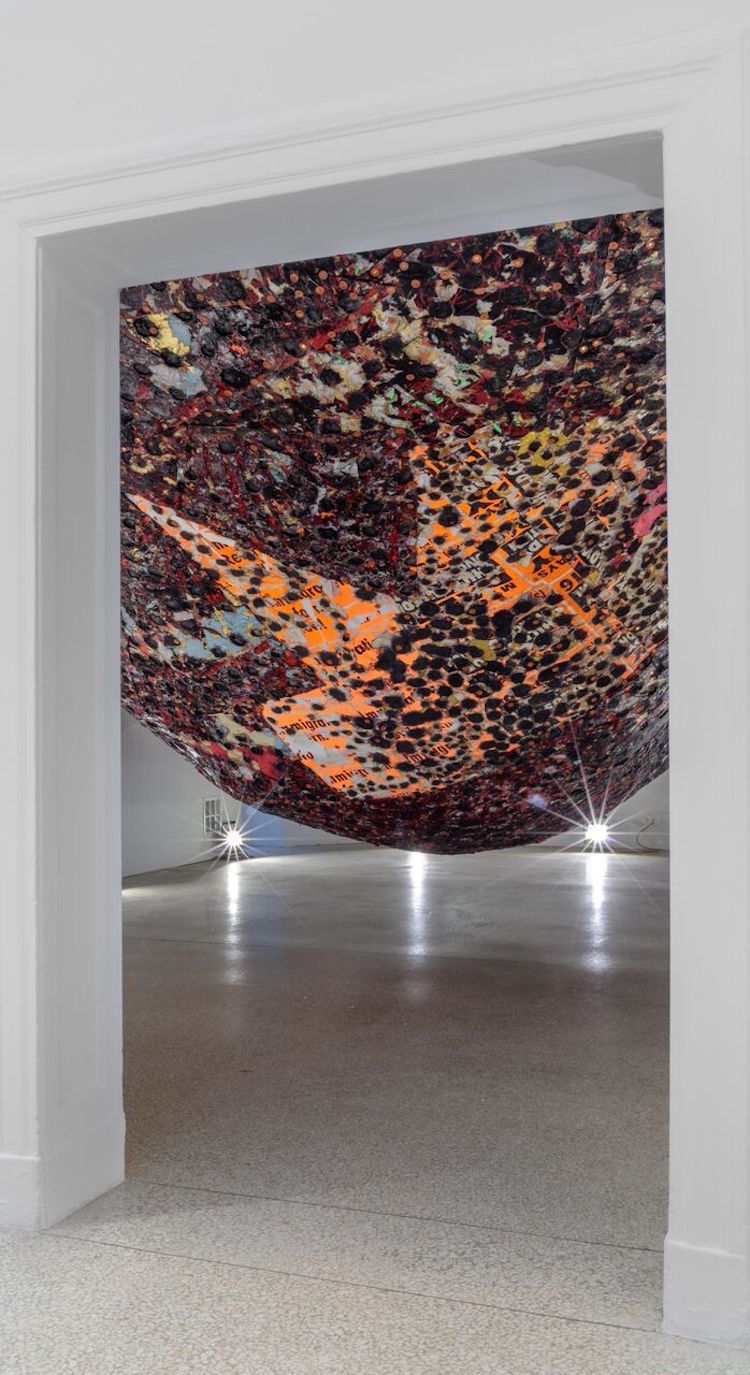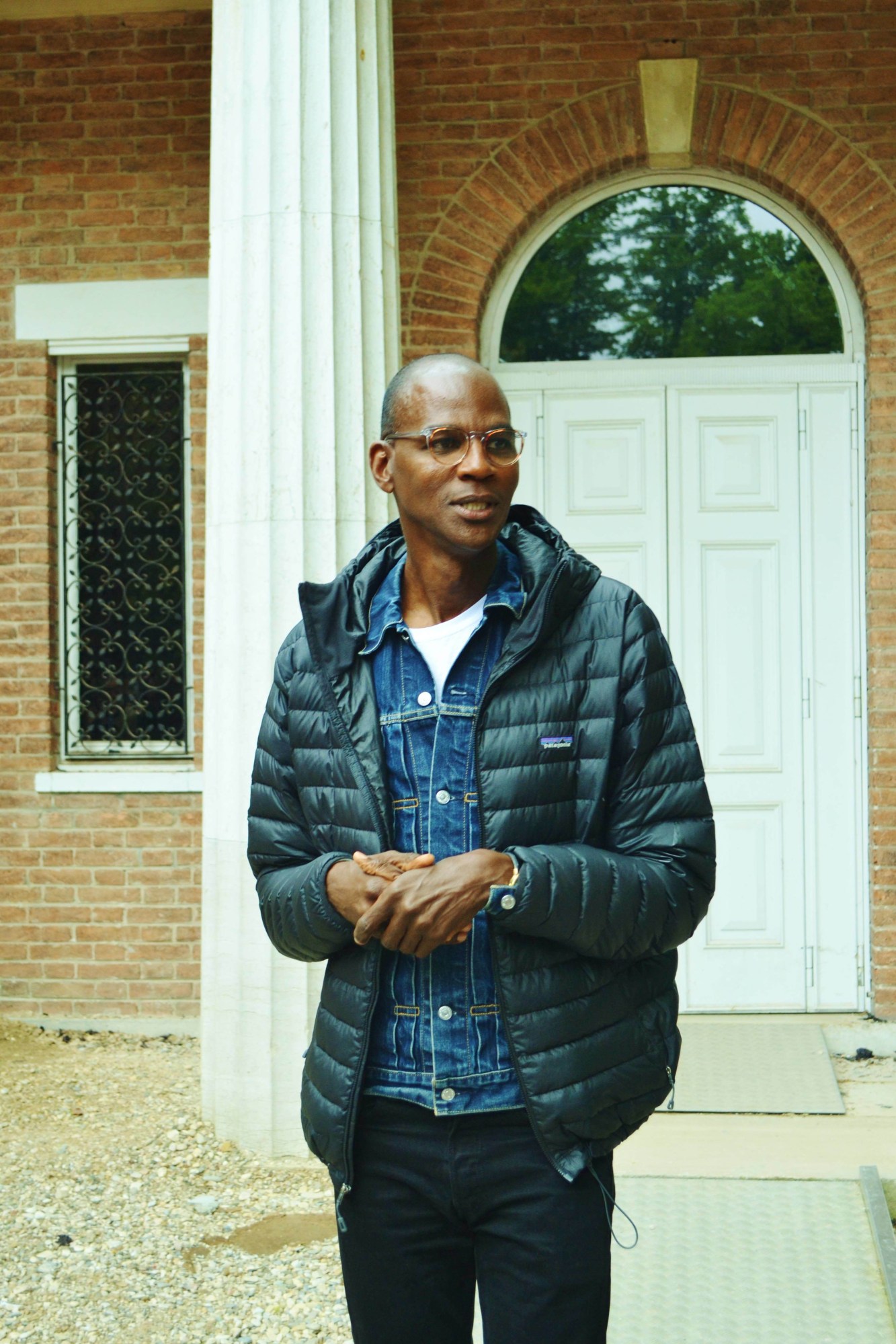The 57th Venice Biennale, also known as the “Olympics of the art world,” opened last weekend and the United States is being represented by Los Angeles artist Mark Bradford in an exhibition which, in a way, is a tribute to hair.
Bradford grew up in a hair salon in L.A.’s Leimert Park neighborhood, which his mother ran for 40 years. He started sweeping hair as a teenager and soon after became a professional hairdresser. Only later, when he was in his 30s, did he become a self-taught visual artist. He was inspired by the materials he found around the hair salon and would glue the leftover paper strips used to wrap curls and perm hair onto bed sheets to create abstract paintings (he couldn’t afford to buy canvases).
Since those early days, he graduated from CalArts’s MFA program and had his first solo show in New York City in 2001. He has since shown his artwork everywhere from the Hammer Museum in L.A. to the Whitney Biennial. Bradford is known for those intense abstract paintings — filled with perm end-papers and scraps from billboards and newspapers — as well as for his video art of basketball courts, and his plywood installations of arks commemorating Hurricane Katrina.

Bradford’s skill as an artist originates from his school days in the hair salon, he says. Relying on his intuition made him a good hairstylist. His mother always told him that if he could fix a hairstyling mistake, he was a pro. That same instinct taught him how to maneuver paint in the same way that he fixed lopsided hairdos, split ends, and bad perms.
“When I was a hairdresser, even if you had three strands of hair on your head, I’d say, ‘Girl, I can work with this,'” Bradford told me. “My whole life, I am working with it. It’s about navigating the roadblocks and finding a way to navigate my life as an artist.”
That lesson came from his mother. “My mother said, ‘Whenever anyone walks into the hair salon, no matter how busy you are, always look up and nod to welcome people,'” recalled Bradford. “I’m always welcoming everybody into what I do, that’s just how I am. How I deal with people, too, comes from hair salons. I can talk to anybody. I’m not one who respects who is important to talk to, I talk to everybody.”
Some people call Bradford an artist-slash-activist, because he co-founded a non-profit foundation called Art + Practice in 2014 with his partner Allan DiCastro and philanthropist Eileen Harris Norton. The support center for foster children living in Leimert Park is also an exhibition space for budding artists. “Instead of adding titles to being an artist, we need to expand what the artist has a capacity to do,” said Bradford. “I have as much interest in politics as others do; it’s just under the umbrella of being an artist.”
Bradford doesn’t like labels but he does identify with being an artist and a citizen. “I don’t have a problem being black but I have a problem with a reduced, easy version of what it means to be black,” he said. “It’s the same thing as being an artist, but the definition of what it means to be an artist needs to be expanded. When I say ‘I am an artist as a citizen,’ I never lost my passport to my citizenship.”
While the Venice Biennale is a high-end art affair with VIP parties, yachts and canapés, Bradford isn’t forgetting those excluded from this type of event. As part of the show, he has collaborated with a local non-profit in Venice called the Rio Tera dei Pensieri, which helps inmates by selling their artisan crafts at a shop in the city’s Frari district.
It ties into Bradford’s own practice, which begins with community. “It’s not enough to do your work and hide away in the studio, we have to do more,” he said. “When you are working with communities in need, they need sustainability. Start talking to people outside of the art world, talk to people who have less and less, go where the houses are less pretty and find the people in need.”

That sense of community is something Bradford learned from his mother too. She was not only a salon owner but also a community leader in her neighborhood, someone who people came to for wisdom. “I am like that too,” said Bradford. “‘Get your shit together, go back to school and pay off your parking tickets,'” I’ll say to some people who ask me for advice,” he said with a laugh. “I don’t want to admit I’m that person, but I am.”
In this exhibition, Bradford shows his perm paper paintings, which he started making in the 1990s. The papers are lined up and made into minimal, grid-like structures that call to mind the paintings of Agnes Martin. The show represents the return of this series, which he had previously put on a long hiatus. “I left the [works] because people kept fetishizing where the material came from, a hairdresser’s salon, from someone who grew up in south central Los Angeles,” said Bradford. “I don’t like being reduced down to a rap video. Where is the diversity? So I moved away from that.”
The sculptures in the show resemble matted weave or untangled braids, or D.I.Y. dreadlocks, as in his sculpture Medusa. They have a rough quality to them — like they’re made of tar, or are large pieces of wet liquorice. They also represent a philosophy which the artist lives by. “I’m into things that are a little elegant, a little bit rough,” said Bradford. “I don’t need to be Instagram perfect.”
Credits
Text and portrait Nadja Sayej
Installation images courtesy of the artist and Hauser & Wirth. Photography Joshua White.
